No Tolerance at Vail Resorts – Keep it Safe & Keep it Fun
As of late, Vail Resorts has made many changes to increase mountain safety: More slow zones, speed control by radar, more yellow jackets, and any employee can take your pass away. There is only so much you can do for safety on the mountain because aside from popular belief skiing, snowboarding, and snowshoeing are DANGEROUS activities and should be respected as such. Every rider on the mountain cannot be lumped into one group as far as what is safe for everyone to do on the mountain. There are many different things that constitute unsafe skiing and riding in this observer’s opinion and I hope that Mountain Safety is considering these things:
1. Skiing outside your ability level; this not only endangers you but also endangers those around you who are within their comfort zone. When a skier or rider gets on terrain where they cannot control their speed, turning, and/or stopping they are in a seriously risky situation. This should be closely considered before entering advanced or expert terrain. Everyone should make sure that they can safely reach the bottom of the run before starting the run; the rider should be comfortable with the slope, tree density, snow conditions, and number of people on the run before beginning the run in the first place. This will help keep everyone safe on the mountain.
2. Young children traveling at high speeds straight down the hill in a pizza wedge! This is one of the most out of control situations I have seen on the mountain. Young kids need to be taught the appropriate way to ski safely; this does not include going as fast as they can then coming to a halt in a giant cloud of snow wrapped around the other snow sport enthusiast that they could not avoid. I have seen this happen more times than I can count. The worst of which an old mans hip and femur were broken while the resilient youngster was not fazed by the collision. Keep your children and other riders safe by teaching them the appropriate way to keep control of their turning and stopping this will ensure that your child has many, many years of safe and fun riding ahead of them.
3. Hitting the brakes in the middle of a catwalk. The catwalks provide many mountain services. 1. They are the easiest way down the mountain. 2. They make traversing to other areas of the mountain a breeze. 3. They enable skiers and snowboarders to skip sections of runs they may not be comfortable with. Catwalks are very mild sloping and can be very difficult to maintain even a slow speed on. Skiers and Snowboarders are commonly densely populated on popular catwalks making for minimal reaction time to sudden actions from the riders in front of them, similar to a crowded highway. This is the most important this to observe on a catwalk is that the people around you are CLOSE TO YOU! Most Catwalks are not an more than 25 feet wide, and the average pair of skis today is between 48 and 65 inches; this means when a group of 3 people stop next to each other on a catwalk they can occupy as much as 65% of a 25 foot wide catwalk this condenses they traffic above them into 35% of the trail, making for a very dangerous situation for all parties involved. Some catwalks are single lane truck access roads on roads like these 3 people could jam the whole catwalk and cause the riders above them to be placed into a dangerous situation. It is your responsibility to do everything you can to keep yourself and other riders safe on the mountain, and in this case it is best to stop by climbing up on the side of the catwalk and waiting for your group rather than stopping in the middle of the trail where it puts everyone endanger. Going up the side will also enable you to gain some speed getting back on the catwalk similar to an on-ramp to a high way. Keep it safe and keep it fun by using your brain to maintain a safe riding environment for you and everyone else.
4. Stopping in a blind spot. This one applies to all areas of the mountain, Terrain Park, beginner terrain, intermediate terrain, advanced terrain, and expert terrain. It does not matter how good of skier you are if you come over a hill and someone is stopped short on the other side it can be impossible to avoid a potentially devastating accident. In the terrain park there are many variable pitches that enable a seasoned rider to keep speed and safely hit each feature; this can system immediately fails when the rider has to turn due to someone standing in a landing area or laying down below a drop in. The terrain park is already the most dangerous place on the mountain any addition to the risk is COMPLETY UNNECESSARY! Be safe stop where it is safe for you and your entire group; if you stop below a roller and see someone coming over it at a high speed that may be the last thing you see until you get to the hospital. Stop where the people above can see you and you can see them. If you are skiing slowly the same attention for vision above should be taken because a moving object is just as hard to miss as a stopped object when the reaction time is as short as it is in these situations. If you fall at the top of a steep pitch every effort should be made to move as far to the side as possible as quick as possible, time is of the essence because your safety is at stake. Please see the eagle valley blog post Skier and Snowboarder Responsibility for more information on terrain park safety and standard practice.
5. Blind Jumping is a NO-NO! Jumping over rollers, noles, hips, terrain park jumps, or catwalks without knowing for sure what is on the other side is extremely dangerous and inappropriate. This is because once you leave the ground you are not in control; you are at the mercy of gravity and the conditions of the terrain you are landing on. As well as the fact that there may be someone not following #4 above and standing in the blind area below the “take-off” just waiting to get a ski or snowboard to the head, and at this point you, the jumper, are at fault. There is a simple and safe solution to blind jumping, have one person go and spot the landing to give you the “go ahead”, (two poles or arms straight up- Touchdown Style), or the “hold up”, (two poles or arms in an X – Don’t Do It Style), this little action could prevent a crash, save a life, save your pass, and make everyone feel safer about jumping over whatever it may be.
6. Cutting ropes into closed areas. The areas of the mountain that are roped off are that way for a reason, and for someone who is unfamiliar with the reasoning behind the closure to cut the closure rope is very dangerous. Areas of the mountain get closed for many reasons: avalanche danger, unmarked obstacles, private land, nature zones, and for snow pack maintenance. Cutting a closure is the easiest way to get your pass taken away from you, whether it is an actual red closure rope or if you just walk around the wrong skier traffic gate your pass is in jeopardy. It is very important now at Vail Resorts to follow all the posted signs and directions. Even if you have to hike back up the hill to make it through a skier traffic direction sign DO IT or they will take your pass. (What you just read may be ridiculous but that is how it is now, and we all need to do our very best to follow the rules to keep our skiing privileges). There are many areas on Beaver Creek especially that give you access to terrain that is not part of the resort, but these areas should only be accessed by an open backcountry gate, and should only be entered with the appropriate equipment and riding ability. NEVER GO IN THE BACKCOUNTRY ALONE! It does not matter how good of a rider you are the backcountry is not patrolled by the mountain ski patrol and it could take days to months to find you if you get into an accident or are disoriented out of bounds. Always ride with a group of 3 or more people so that if someone is hurt they are not left by themselves (4 or more is strongly recommended). Having a GPS with someone in your group is also strongly recommended, this way is a lot easier to recreate the run that your buddy got hurt on and ride directly back to them (Log your tracks, Waypoint the spot of the injured person, Get help, Go back . . . easy as that!). Wear a beacon, probe and shovel in the backcountry. In the case of an avalanche, having beacon, probes and shovels is the most important thing to get your pal that’s underneath the snow out alive. Stay safe, be smart and have fun.
Rider education is one of the most important things available for skier and snowboarder safety, Vail Resorts should ensure that every skier knows the code because many recent reports show that people do not know and/or understand the appropriate steps for mountain safety, please see the post Skier and Snowboarder Responsibility or the Beaver Creek’s Safety on the Slopes page to educate your self on this important information
Ski Patrol is doing what they can to keep you safe, but it all starts with you and I, the riders, to keep everyone safe on the mountain if we all follow the rules and guidelines for safe skiing and snowboarding enjoyment ski patrol will not have to take every offense so seriously, and mountain safety statistics will be better and it will be because of YOU the rider not the “Mountain Safety Staff”. We all have a right to enjoy our National Forest, but it will keep getting harder and harder if people do not keep safety at the forefront.
My pass was pulled for walking around a skier direction sign on the wrong side, and as crazy as that is to me I still think that the mountain safety efforts are well placed until the attitude and overall safety of the rider population as a whole is changed for the better.
If you think you were being safe and are being approached by ski patrol keep calm and collected or the situation could escalate to the point where you are done for the year. Be polite and accepting of their views because they will win the battle, but if we all stay safe we will win the war on unsafe mountain activity without Mountain Safety having to patrol every common area.
Keep it Safe & Keep it Fun!!
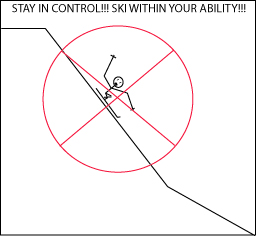
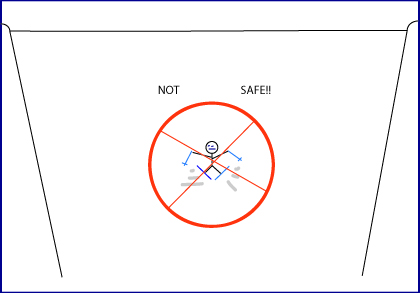
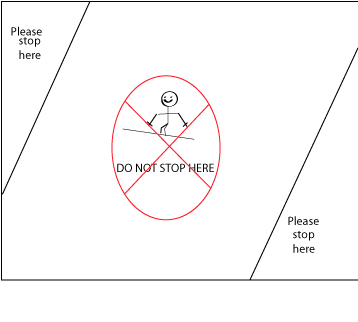
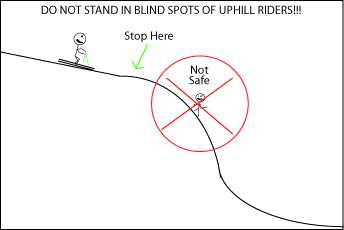
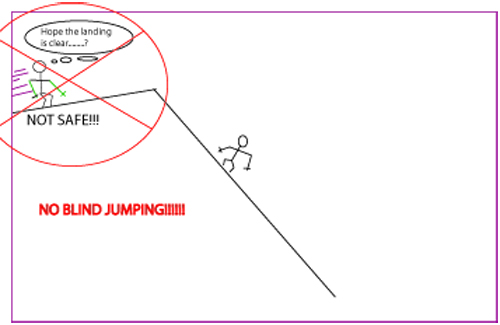
[…] No Tolerance at Vail Resorts – Safety First […]